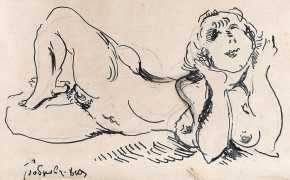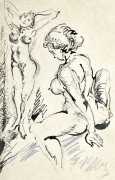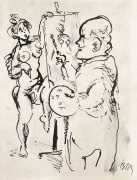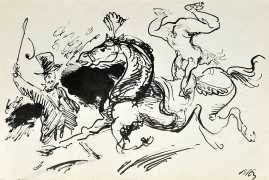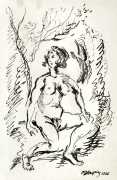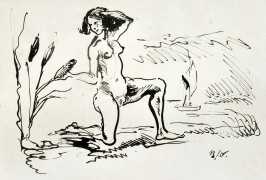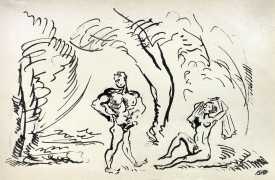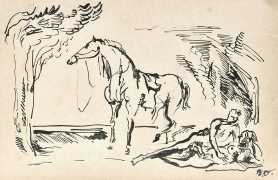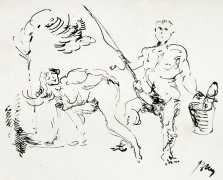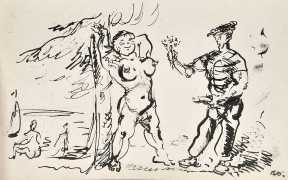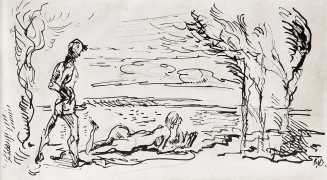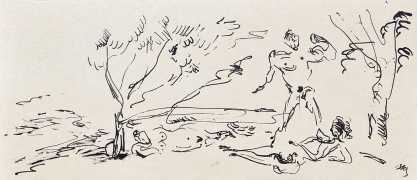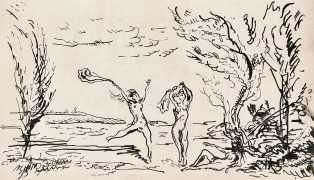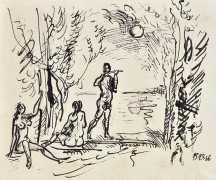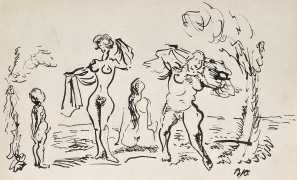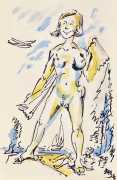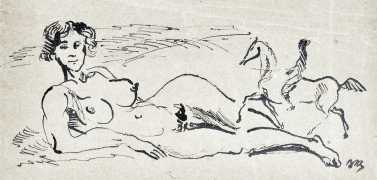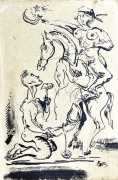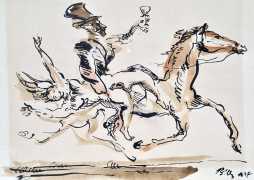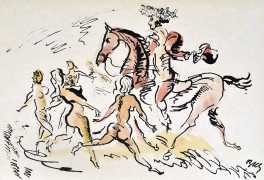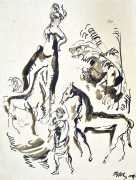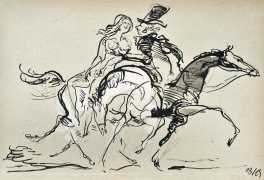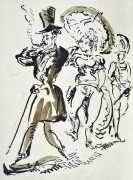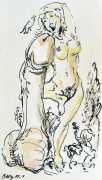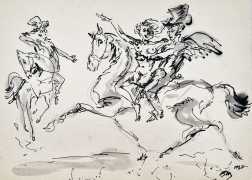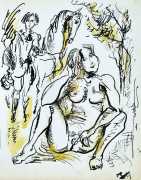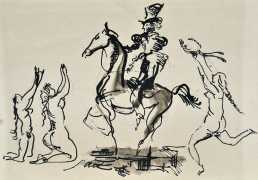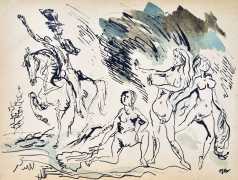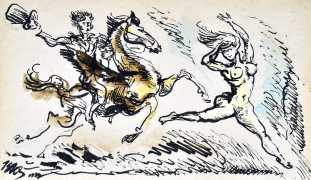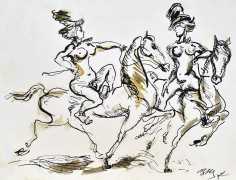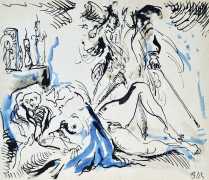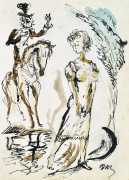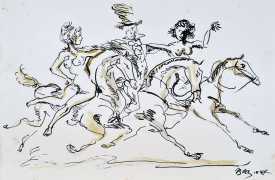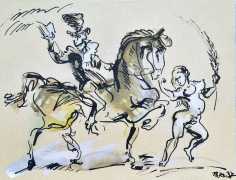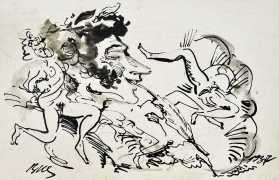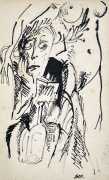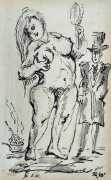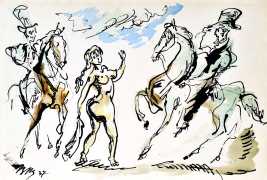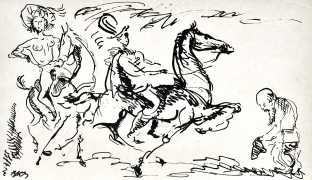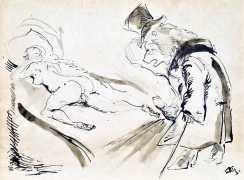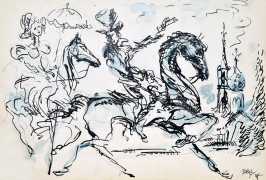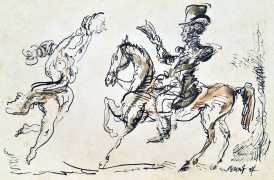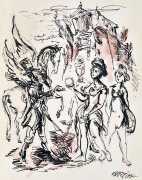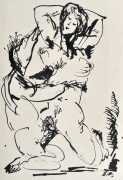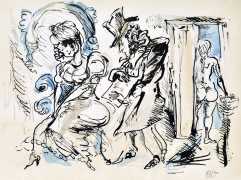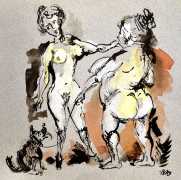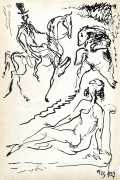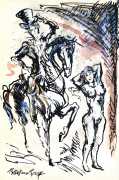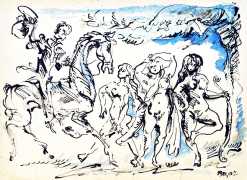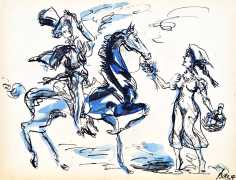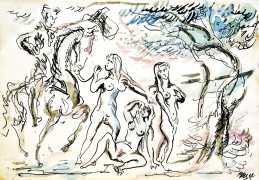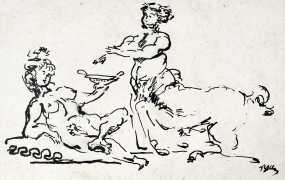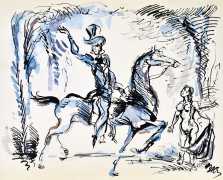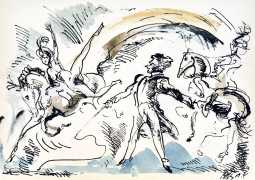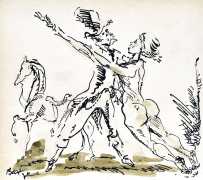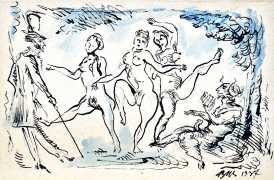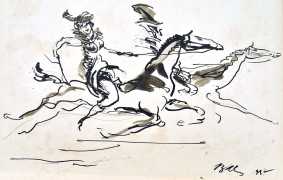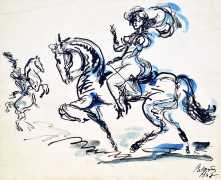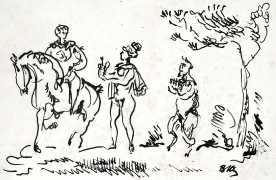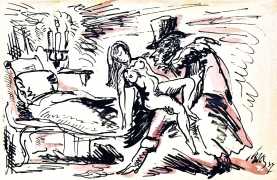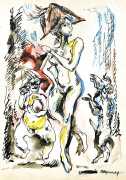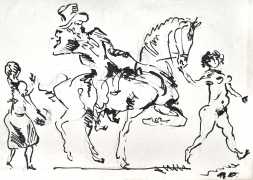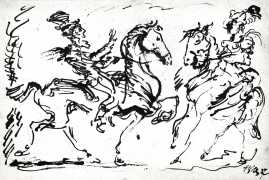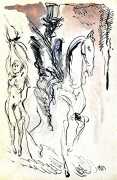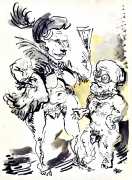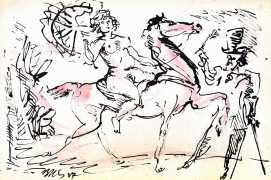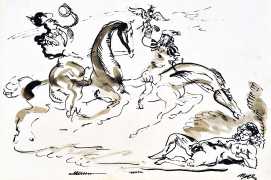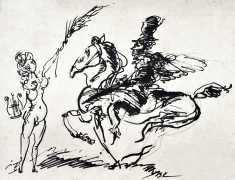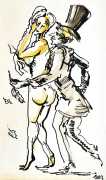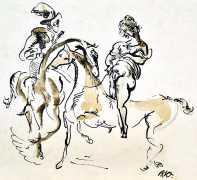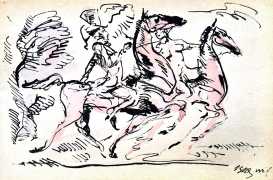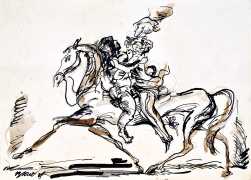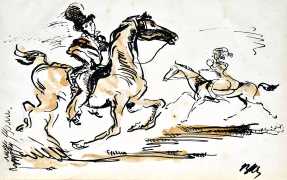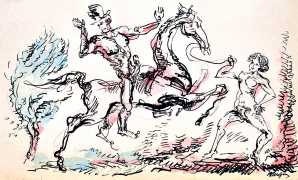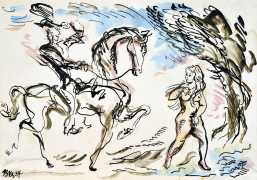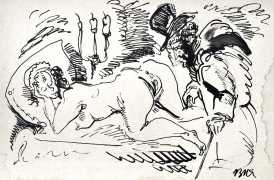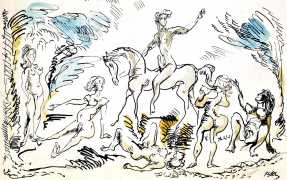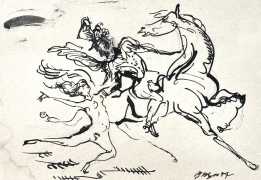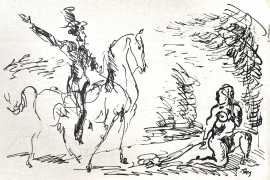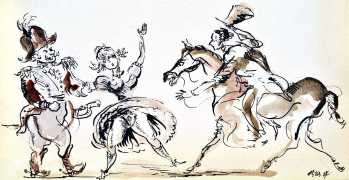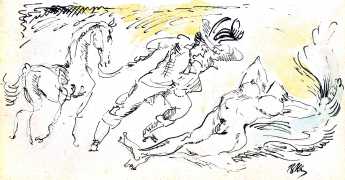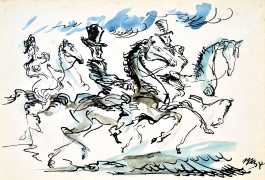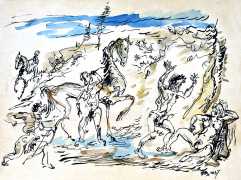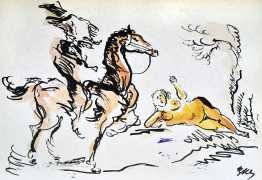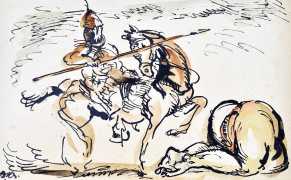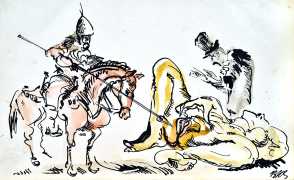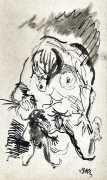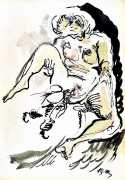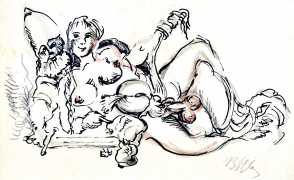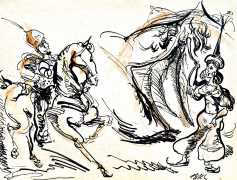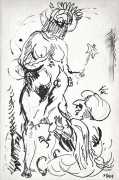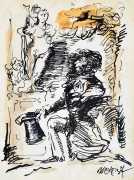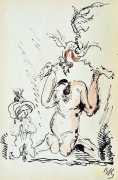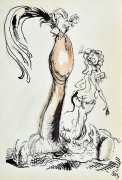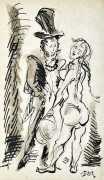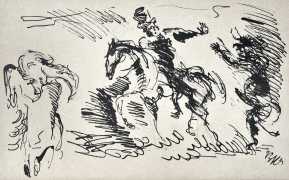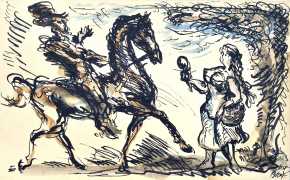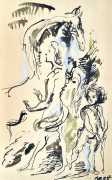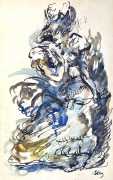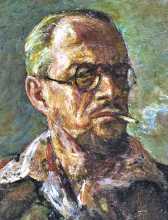 The Russian artist Valentin Mikhailovich Yustitsky was born into a military family in St Petersburg, the oldest of five children. In 1908 the family relocated to Vilnius, now in Lithuania but then part of Russia, where from 1909 to 1912 Valentin studied at the Vilnius Drawing School under Ivan Petrović Trutnev. Though the artistic training was formal and academic, young colleagues of Trutnev including Ivan Rybakov, Sergei Yuzhanin and Nikolai Sergeev-Korobov introduced the students to modern trends in art including Impressionism and oriental painting, and in 1912–13 Yustitsky spent a year in Paris studying and painting.
The Russian artist Valentin Mikhailovich Yustitsky was born into a military family in St Petersburg, the oldest of five children. In 1908 the family relocated to Vilnius, now in Lithuania but then part of Russia, where from 1909 to 1912 Valentin studied at the Vilnius Drawing School under Ivan Petrović Trutnev. Though the artistic training was formal and academic, young colleagues of Trutnev including Ivan Rybakov, Sergei Yuzhanin and Nikolai Sergeev-Korobov introduced the students to modern trends in art including Impressionism and oriental painting, and in 1912–13 Yustitsky spent a year in Paris studying and painting.
In 1915 Valentin married Anna Petrovna Kushkova (1894–1968), the first of two marriages by which he had three daughters. They moved back to St Petersburg (at that time renamed Petrograd), where Yustitsky started to exhibit his experimental work to critical approval. In 1918 he was sent to Saratov, a city with a strong artistic tradition, ‘to create proletarian art’. Together with Nikolai Ivanovich Simon from Moscow, Yustitsky headed the painting and drawing studio at the Saratov Proletkult, two years later becoming a professor at the Saratov Free State Art Workshops, where he taught until the beginning of 1935. The family then moved to Moscow, where Valentin worked as an artist and book illustrator, his commissions including the works of Emile Zola, Gustave Flaubert, Marcel Proust, Maurice Maeterlinck and Vladimir Mayakovsky.
In April 1937 he was arrested for anti-Soviet agitation and sentenced to ten years’ imprisonment, which he served in correctional camps in Karelia. In autumn 1946 he was released and returned to Saratov, where he died five years later.
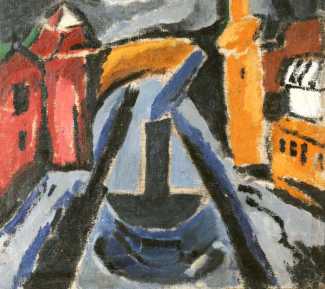
There are artists who relatively quickly find their own trademark style, which they then develop and enrich. Yustitsky was exactly the opposite, always looking for new ways to express himself, distinguished by an ability to absorb and transform the most diverse of trends to create his own unique style. This ability was astutely noted by a reviewer of his first solo exhibition in 1923: ‘Here is an artist who always reflects the characteristic features and milestones of each transitional era.’ Yustitsky’s whole life was a non-stop search, a constant readiness to assimilate impulses from anywhere and everywhere, an irresistible craving for constant self-renewal. His output included elements of Impressionism, Constructivism, Expressionism and Fauvism, but always with a cheerful freedom which marked all his work. He regularly warned his students about the dangers of compulsory adherence to any particular artistic trend, one of his students remembering how, when labouring over a sketch, Yustitsky came up behind him saying ‘Here’s my advice: steal a three-ruble note, take it to the station, drink vodka, break a window, run away from the police, and then stand at your easel and draw’.
We would like to thank our Russian friend Yuri for suggesting the inclusion of this artist.



